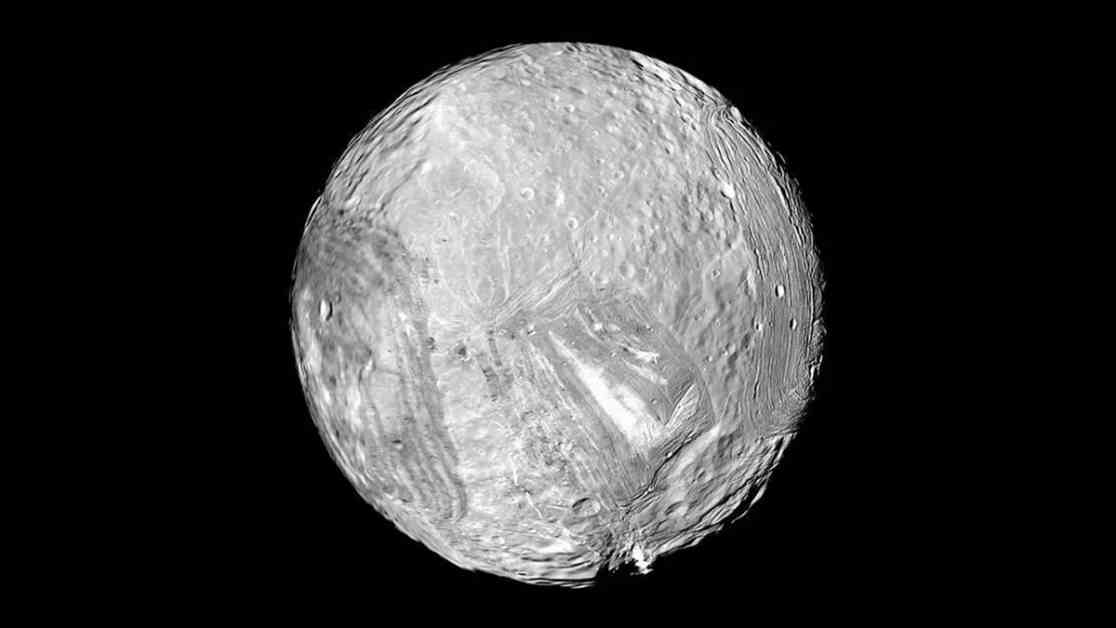Uranus, the coldest planet in our solar system, has a fascinating moon called Miranda. Back in 1986, NASA’s Voyager 2 spacecraft captured images of Miranda’s southern hemisphere, revealing a variety of geological features like grooved terrain, rough scarps, and cratered areas.
Recent research based on these images suggests that Miranda may have once had a deep liquid water ocean beneath its surface. The team of planetary scientists, led by Tom Nordheim from Johns Hopkins Applied Physics Laboratory, used computer models to analyze the stress patterns on Miranda’s surface and concluded that there may have been an ocean 100-500 million years ago, buried beneath 19 miles of surface ice.
What’s intriguing is that Miranda’s ocean could have been 62 miles deep, taking up almost half of the moon’s entire body. This discovery challenges our understanding of small celestial bodies and raises the possibility of multiple ocean worlds around Uranus.
The key to sustaining Miranda’s ocean was likely the tidal forces generated by its proximity to other moons. Similar to Jupiter’s moons Io and Europa, which have a 2:1 resonance, the gravitational stretching and compressing of Miranda could have kept its interior warm enough for a liquid ocean. However, as Miranda fell out of sync with the other Uranian moons, the mechanism keeping it warm likely ceased, leading to a potential freeze-over.
Despite these findings, researchers are still eager to learn more about Miranda and its mysterious ocean. Nordheim emphasizes the need for further exploration to confirm the existence of the ocean and understand the moon’s complex history.
This groundbreaking research, published in The Planetary Science Journal, sheds light on the hidden secrets of Miranda and opens up possibilities for future missions to explore Uranus and its potential ocean moons. The study not only deepens our understanding of celestial bodies in our solar system but also highlights the importance of continued scientific exploration in unraveling the mysteries of the universe.










